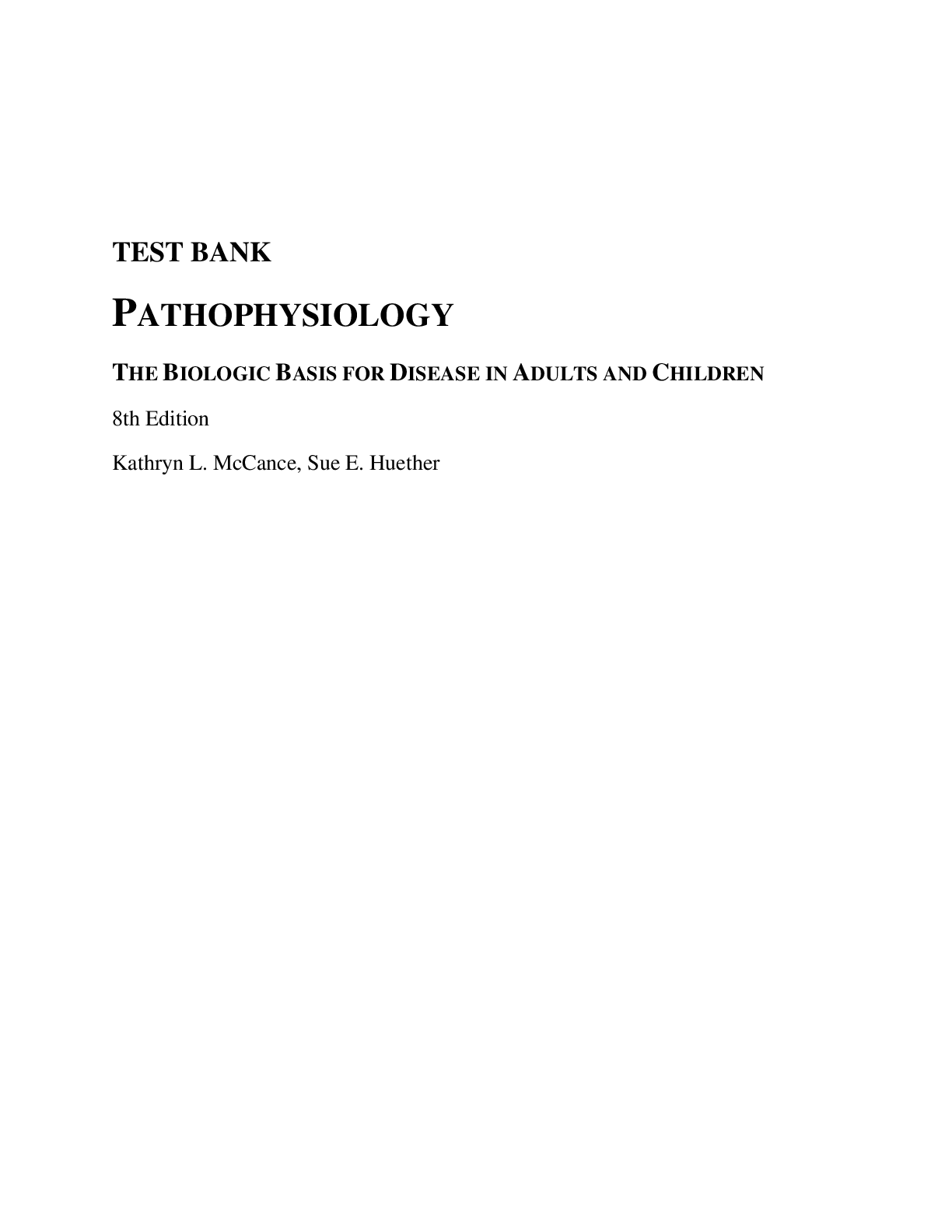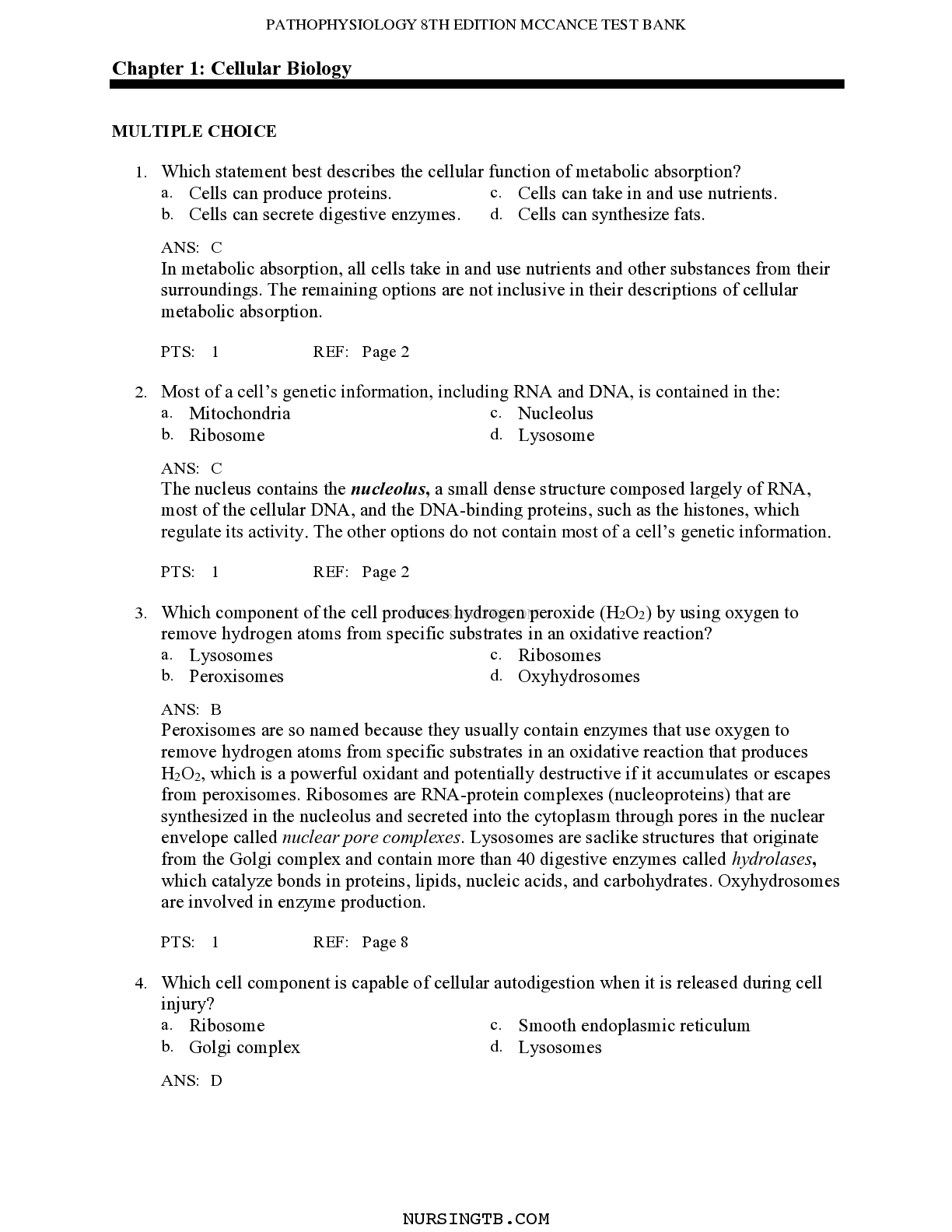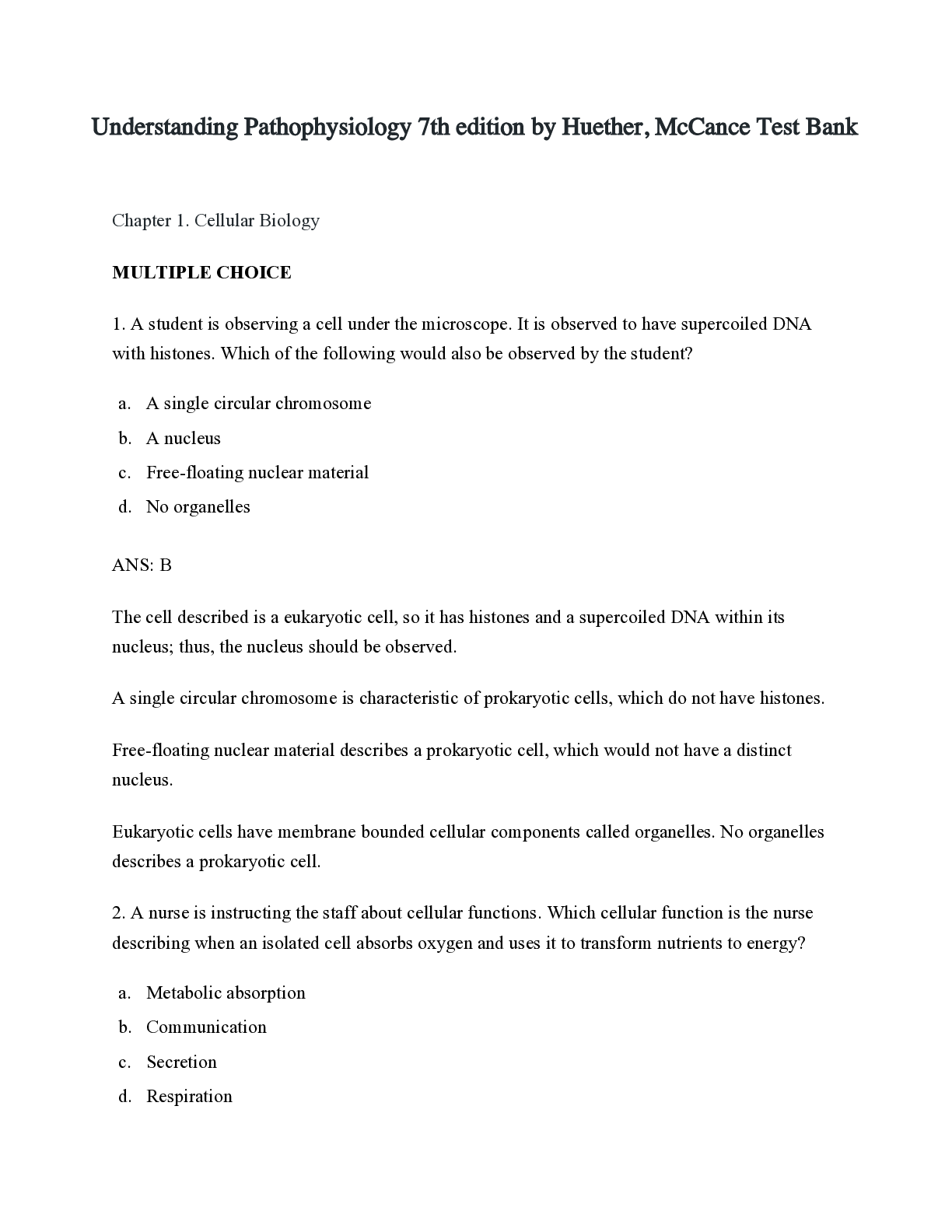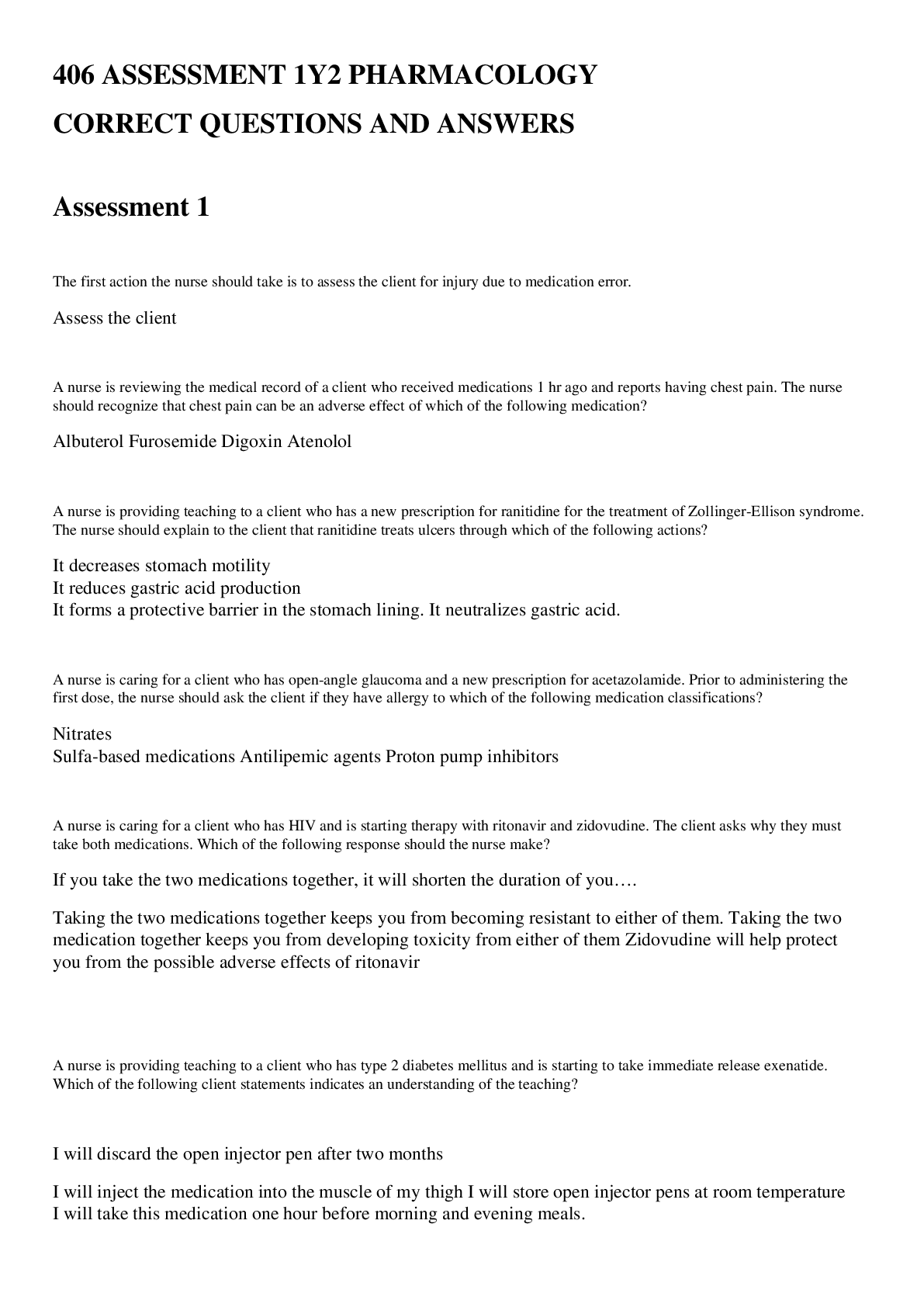Health Care > QUESTIONS & ANSWERS > NFHS First Aid, Health and Safety for Coaches Test Answers (All)
NFHS First Aid, Health and Safety for Coaches Test Answers
Document Content and Description Below
An athlete has sustained a bruise. Which action would be most appropriate? - Apply ice for 30-40 minutes. Continue sets of 5 back blows and 5 abdominal thrusts until the: - All of the above. An ... athlete has frostbite of the toes. Which action would be most appropriate? - Place cotton or gauze between the toes. If lightning is striking nearby when people are outside and there is no time to evacuate, they should: - Avoid squatting or sitting close to other people. When an athlete develops a sudden illness, you should: - Look around the area for clues that might tell you what happened to the athlete. What is the purpose of Good Samaritan laws? - To help protect people who voluntarily give care without expecting anything in return. To give abdominal thrusts, position your covered fist: - Above the naval. Which of the following care steps would be included for an athlete with hypothermia until advanced medical personnel arrives? - All of the above. Specific types of splints include: - All of the above. For which condition would you decide to call 9-1-1 for an athlete who has sustained a wound? - The athlete has uncontrolled bleeding. Heat-related illnesses include which of the following? - Heat cramps, heat exhaustion and heat strokes. Anorexia nervosa is an eating disorder that is characterized by: - Restrictive eating in individuals who see themselves as being overweight or afraid of gaining weight. The Emergency Action Plan (EAP) should include: - All of the above. When dealing with an athlete who has mental health issues, the coach's role is to: - All of the above. An athlete has sustained an injury that involves the tearing of the muscles in the back of his leg. This type of injury is called: - Strain. If you are caring for an athlete with heat stroke and you cannot immerse the athlete up to his or her neck in an ice-water pool or tub, what other methods can you try? - Any of the above. How do you care for an athlete with a possible head, neck or back injury? - Support the head in the position you find it. Do not try to align it. To help control a nosebleed, you should have the athlete: - Lean slightly forward while pinching the nostrils together until the bleeding stops. To care for an athlete having a diabetic emergency who can swallow, give some form of sugar, such as: - Any of the above. Common signals of bulimia nervosa include: - All of the above. A concussion is a type of brain injury that usually involves: - Temporary loss of brain function resulting from a blow to the head. One signal of a breathing emergency is: - Making a wheezing or high-pitched sound. Which type of injury involves an open wound where the bone has torn through the skin? - Open fracture. The general care for a muscle, bone or joint injury includes the following: - Rest, Immobilize, Cold and Elevate. Which of the following would you expect to find in an athlete experiencing a diabetic emergency? - All of the above. Activate the EMS system by: - Calling 9-1-1 or the local emergency number. An athlete is experiencing early signs and symptoms of heat illness. Which of the following would you do? - Move the athlete to a cooler place. MRSA infections are most commonly spread by: - Skin-to-skin contact. To prevent heat-related illness emergencies, which action would be most appropriate? - Exercising for brief periods with frequent rests. Which of the following is not a signal of a breathing emergency? - Vomiting. [Show More]
Last updated: 2 years ago
Preview 1 out of 4 pages

Buy this document to get the full access instantly
Instant Download Access after purchase
Buy NowInstant download
We Accept:

Reviews( 0 )
$7.00
Can't find what you want? Try our AI powered Search
Document information
Connected school, study & course
About the document
Uploaded On
Jan 19, 2023
Number of pages
4
Written in
Additional information
This document has been written for:
Uploaded
Jan 19, 2023
Downloads
0
Views
70










.png)



